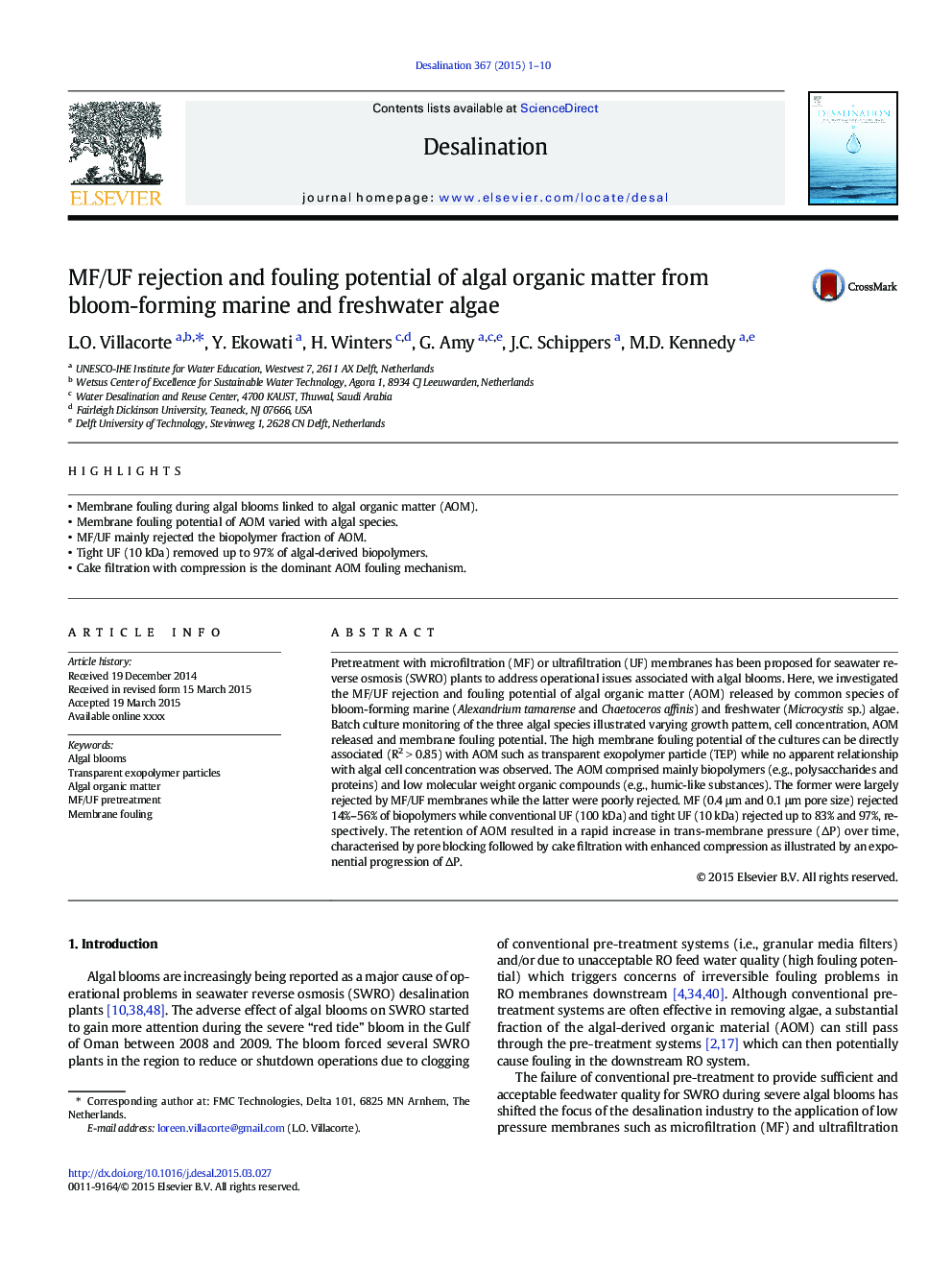| Article ID | Journal | Published Year | Pages | File Type |
|---|---|---|---|---|
| 623147 | Desalination | 2015 | 10 Pages |
Abstract
Pretreatment with microfiltration (MF) or ultrafiltration (UF) membranes has been proposed for seawater reverse osmosis (SWRO) plants to address operational issues associated with algal blooms. Here, we investigated the MF/UF rejection and fouling potential of algal organic matter (AOM) released by common species of bloom-forming marine (Alexandrium tamarense and Chaetoceros affinis) and freshwater (Microcystis sp.) algae. Batch culture monitoring of the three algal species illustrated varying growth pattern, cell concentration, AOM released and membrane fouling potential. The high membrane fouling potential of the cultures can be directly associated (R2 > 0.85) with AOM such as transparent exopolymer particle (TEP) while no apparent relationship with algal cell concentration was observed. The AOM comprised mainly biopolymers (e.g., polysaccharides and proteins) and low molecular weight organic compounds (e.g., humic-like substances). The former were largely rejected by MF/UF membranes while the latter were poorly rejected. MF (0.4 μm and 0.1 μm pore size) rejected 14%-56% of biopolymers while conventional UF (100 kDa) and tight UF (10 kDa) rejected up to 83% and 97%, respectively. The retention of AOM resulted in a rapid increase in trans-membrane pressure (ÎP) over time, characterised by pore blocking followed by cake filtration with enhanced compression as illustrated by an exponential progression of ÎP.
Related Topics
Physical Sciences and Engineering
Chemical Engineering
Filtration and Separation
Authors
L.O. Villacorte, Y. Ekowati, H. Winters, G. Amy, J.C. Schippers, M.D. Kennedy,
